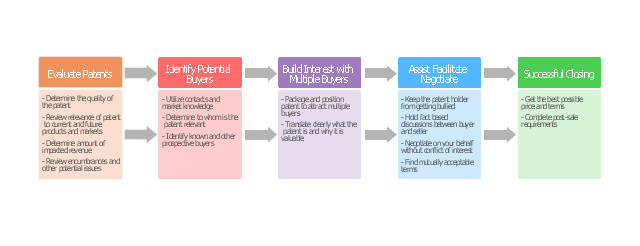"A patent ... is a set of exclusive rights granted by a sovereign state to an inventor or assignee for a limited period of time in exchange for detailed public disclosure of an invention. An invention is a solution to a specific technological problem and is a product or a process. Patents are a form of intellectual property.
The procedure for granting patents, requirements placed on the patentee, and the extent of the exclusive rights vary widely between countries according to national laws and international agreements. Typically, however, a granted patent application must include one or more claims that define the invention. A patent may include many claims, each of which defines a specific property right. These claims must meet relevant patentability requirements, such as novelty and non-obviousness. The exclusive right granted to a patentee in most countries is the right to prevent others from making, using, selling, importing, or distributing a patented invention without permission.
Under the World Trade Organization's (WTO) Agreement on Trade-Related Aspects of Intellectual Property Rights, patents should be available in WTO member states for any invention, in all fields of technology, and the term of protection available should be a minimum of twenty years. Nevertheless, there are variations on what is patentable subject matter from country to country." [Patent. Wikipedia]
The step chart example "Selling technology patent process" was created using the ConceptDraw PRO diagramming and vector drawing software extended with the Block Diagrams solution from the area "What is a Diagram" of ConceptDraw Solution Park.
The procedure for granting patents, requirements placed on the patentee, and the extent of the exclusive rights vary widely between countries according to national laws and international agreements. Typically, however, a granted patent application must include one or more claims that define the invention. A patent may include many claims, each of which defines a specific property right. These claims must meet relevant patentability requirements, such as novelty and non-obviousness. The exclusive right granted to a patentee in most countries is the right to prevent others from making, using, selling, importing, or distributing a patented invention without permission.
Under the World Trade Organization's (WTO) Agreement on Trade-Related Aspects of Intellectual Property Rights, patents should be available in WTO member states for any invention, in all fields of technology, and the term of protection available should be a minimum of twenty years. Nevertheless, there are variations on what is patentable subject matter from country to country." [Patent. Wikipedia]
The step chart example "Selling technology patent process" was created using the ConceptDraw PRO diagramming and vector drawing software extended with the Block Diagrams solution from the area "What is a Diagram" of ConceptDraw Solution Park.
- Import process - Flowchart | Flow Chart Template | Process Flow ...
- Importing Process Chart
- Import Procedure Flow Chart
- What Are The Procedures For Importing Chart
- Fishbone Diagram Procedure | Flow chart Example. Warehouse ...
- Import And Export Procedure Flow Chart
- Export Procedure Charts Easy
- Import process - Flowchart | Flowchart Software | TQM Diagram ...
- Import Procedure Diagram
- Import process - Flowchart | Marketing Infographics | Flow Chart Of ...
- Import Process Flow Chart
- Import Export Procedure Flow Chart
- Flowchart Software | Import process - Flowchart | Basic ...
- Goods Receiving Process Flow Chart
- Import process - Flowchart | Target Diagram | Marketing Infographics ...
- Import process - Flowchart | Block diagram - Selling technology ...
- Import process - Flowchart | Flowchart Software | Basic Flowchart ...
- Process Flow Chart Symbols | Basic Flowchart Symbols and ...
- Flowchart Of Import Procedure
